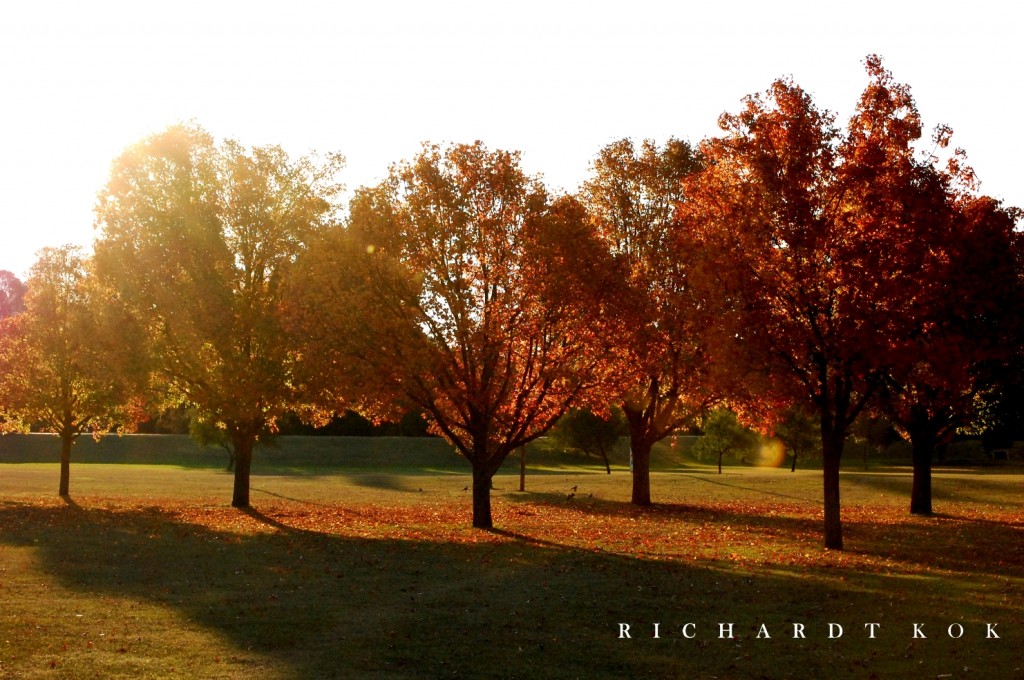Although I am not fond of autumn, mostly because it precedes winter, I have come to appreciate it for its own beautiful colours. Up here in Pretoria it is an absolute pleasure to drive around Brooklyn and Rietondale and see all the liquid amber trees showing off their red-gold sunset coloured leaves. Rietondale Park is especially perfect for a lazy Sunday autumn picnic this time of the year.
Okedokes, this post starts with autumn but it is actually about home composting. This is the start of one of the first long term projects on maak’it. I am going to attempt to rehabilitate the soil in the backyard at 3623 using only that which is freely available in the garden and in the kitchen. You know the story of the backyard from the French drain installation post and after this year’s rainy season I am happy to declare the drain a success and move on to the next phase of fixing up the backyard, soil rehabilitation.
A friend, who has a magnificent garden and veggie patch recommended Jane’s Delicious Garden by Jane Griffiths for gardening advice that does not intimidate and actually gets you all excited to go and play with and in your garden. I too, am now a Jane’s garden convert. It is really a great book! It was after reading the section on composting that I realised I have been composting in a rather ineffectual way the past 3 years.
Back in 2010, I had a bee in my bonnet about building a compost box. After spending way too much money on too expensive wood (/0\, structural pine is overkill!!) we ended up with a really good looking gated box.
As you can see from the photos above the poor box got more than it could handle. A big design flaw of this type of compost box is that it doesn’t allow you to turn the compost easily, it also doesn’t allow for much air flow in the compost. Turns out those two things are pretty important when it comes to composting. The rest of the composting mistakes were however born from ignorance. We added soil to the garden refuse thinking it will speed up the decomposition process and we just added the garden refuse willy nilly. This way of composting is NOT wrong but it does take a VERY long time before you have anything usable. On top of that it is a bitch to get to the usable bits, which is right at the bottom, without the top layers tumbling down. All in all not a good solution for what I need right now..
The Basics of Successful Home Composting
Here is a list of things I learnt about composting from the delightful Ms Griffiths.
- Keep your compost heap a manageable size, 1 m x 1 m should work well.
- Don’t compact your compost, allow for aeration.
- Keep your compost heap moist, but not wet.
- Turn your compost heap every couple of weeks.
- Alternate ‘green’ and ‘brown’ layers in your heap.
So with those points in mind here is the plan for the new and improved home composting system at 3623.
Above is the current garden refuse heap, no way it can be called a compost heap at the moment. In order to get space to build the new composting system, this first need to be cleared out. We’ll separate the ‘green’ from the ‘brown’ and get rid of the larger chunks of refuse (branches etc). Hopefully when we get to the bottom there will be a couple bags of usable compost. Once that is done I plane to erect four chicken mesh ‘cages’ next to each other against the precast boundary wall, with an easily removable shared ‘wall’ between every cage. 
The easily removable shared ‘wall’ is still a mystery to me, but I am thinking along the lines of corrugated iron sheeting cut to size, which would be held in place with droppers on either side. But if you can think of something that will work better, please let me know in the comments. So why the removable shared wall? For easy turning. Remove the barrier between a filled and an empty cage. ‘Tip’ over the heap from the full cage to the empty one and voila, one turned compost heap! The two separate ‘green’ and ‘brown’ cages will just serve as storage space until it is needed in a layer. That is the plan for the new and improved 3623 composting system, next week I’ll show you the end result. Can’t wait!
Just a last word about autumn and its endless supply of leaves. Don’t chuck your fallen leaves away! Use it as a winter cover in your vegetable garden, flower beds or anywhere where you have bare soil. You can also use it to protect your lawn from frost during the winter months, something I will very definitely do. There is nothing quite as depressing as the crunch of yellow frost-dead grass underfoot, to say nothing of how very ugly it is to look at. If you have any left over why not start making leafmould? In order to kick start the soil rehabilitation program I have melded the mulch and mould idea and started covering the backyard with leaves which I keep moist. I am using shade netting to keep it in place where there is heavy dog-paw traffic. Will let you know how it turns out!
Until next week, happy maak’iting!





